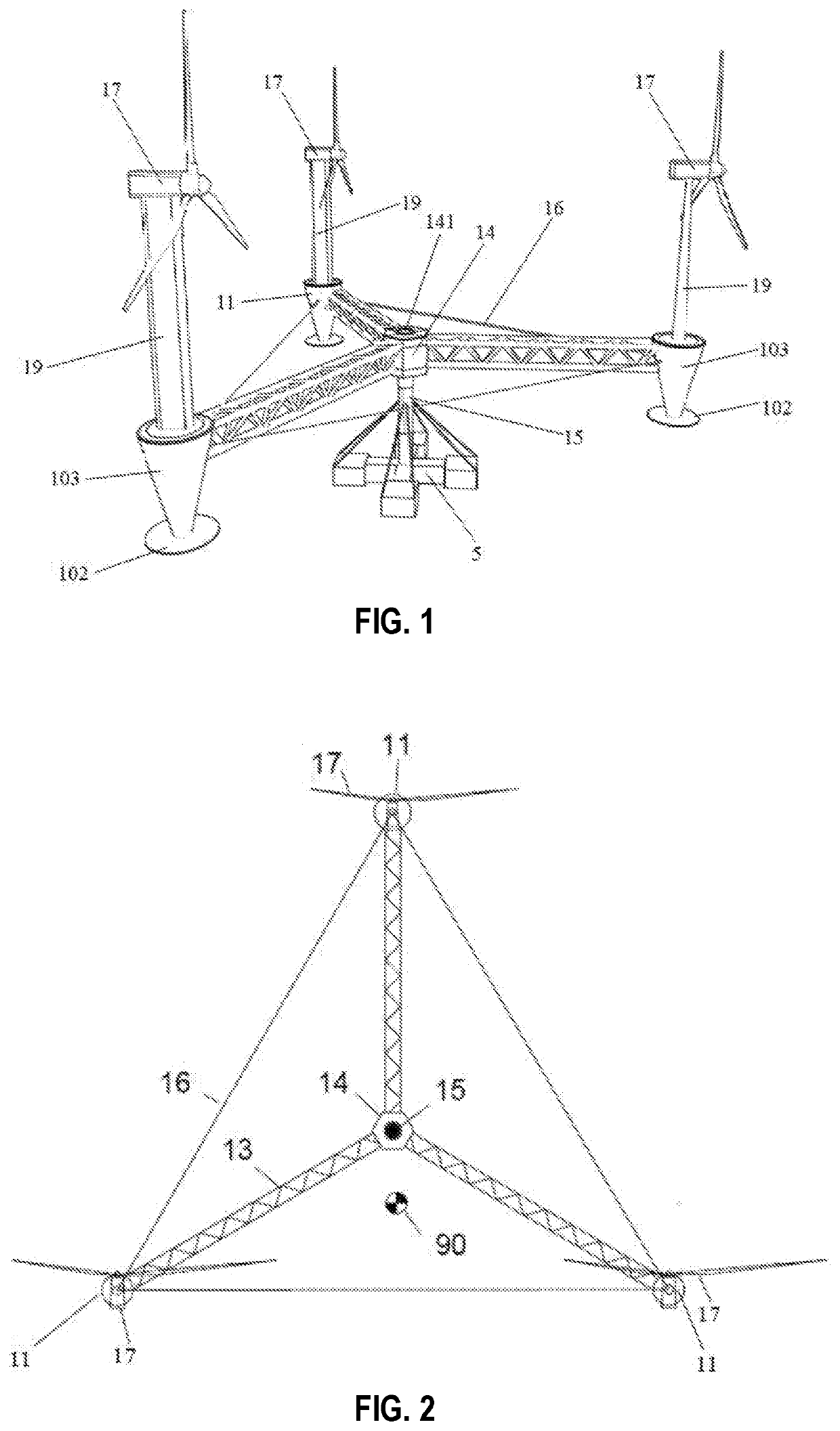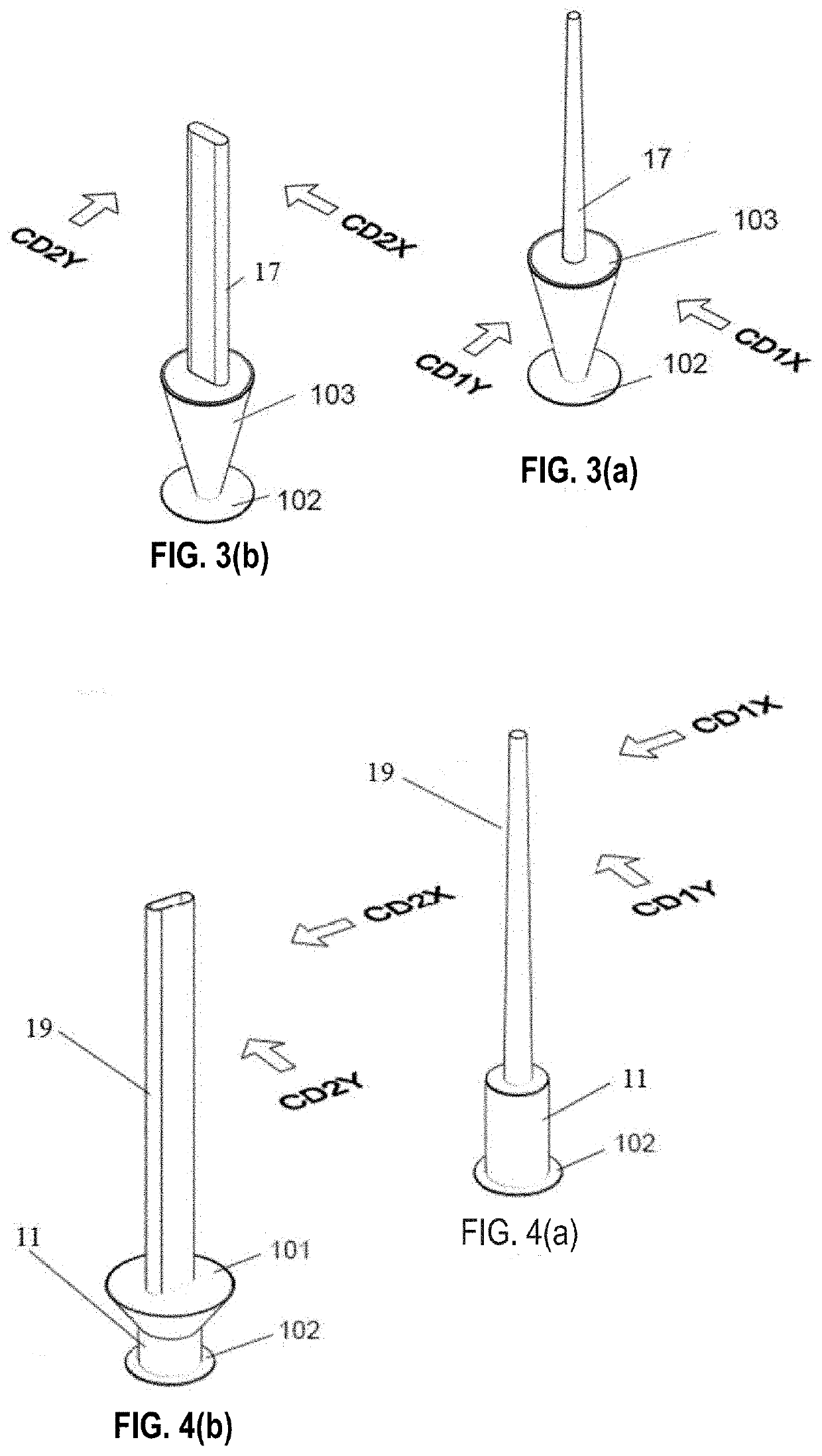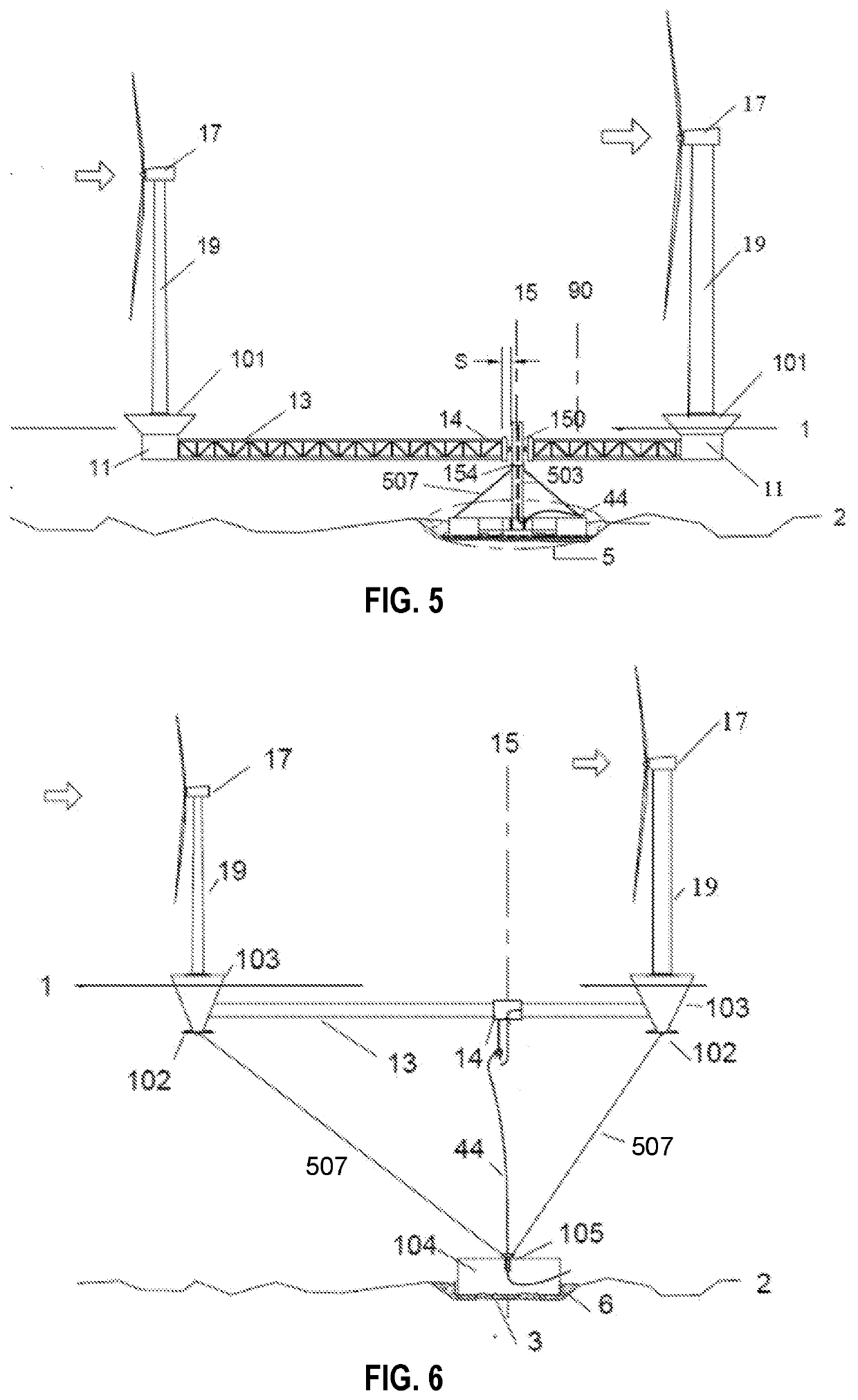Self-aligning to wind facing floating platform supporting multi-wind turbines and solar for wind and solar power generation and the construction method thereon
a technology of wind and solar power generation and floating platform, which is applied in the direction of special purpose vessels, vessel construction, greenhouse gas reduction, etc., can solve the problems of high construction cost, huge electricity consumption of offshore wind power generation, and lack of offshore wind power development behind land-based wind power developmen
- Summary
- Abstract
- Description
- Claims
- Application Information
AI Technical Summary
Benefits of technology
Problems solved by technology
Method used
Image
Examples
Embodiment Construction
[0046]As used herein, the term “floater” refers to a floating structure in a body of water on which a wind power turbine may be mounted thereon. As used herein, the phrase “self-aligning to wind” means that the turbine rotor blades' rotating surface is perpendicular to the incoming wind. Additionally as used herein, the term “wind tracing” means a turbine turning to the designated direction following the change of the wind direction. Hereafter, the center of gravity or “C.G.” means the center of gravity of any mass in the described subject matter. Further, the center of geometry or “C.Geo.” means the center of geometry of the wind load receiving areas for the described subject matter.
[0047]The example embodiments to be more fully described hereafter are directed to a self-aligning to wind floating platform supporting multiple wind turbines for wind power generation, the platform adapted to be deposited in a body of water to generate electricity, as well as the platform's application...
PUM
 Login to View More
Login to View More Abstract
Description
Claims
Application Information
 Login to View More
Login to View More - R&D
- Intellectual Property
- Life Sciences
- Materials
- Tech Scout
- Unparalleled Data Quality
- Higher Quality Content
- 60% Fewer Hallucinations
Browse by: Latest US Patents, China's latest patents, Technical Efficacy Thesaurus, Application Domain, Technology Topic, Popular Technical Reports.
© 2025 PatSnap. All rights reserved.Legal|Privacy policy|Modern Slavery Act Transparency Statement|Sitemap|About US| Contact US: help@patsnap.com



